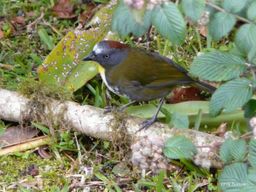Long dead, but these birds soar the skies again. Science has given it a new life.
The professor of Mechanical Engineering at the University of New Mexico, Mostafa Hassanalian, is working on a very peculiar experiment: stuffed birds turned into drones.
Mostafa Hassanalian works at the university’s autonomous flight laboratory, which specializes in drones.
Most of the drones use four or more engines to stay airborne, although there is a whole branch of drones that fly like birdsflapping wings.
Stuffed birds turned into drones
Mostafa Hassanalian’s work is based on observe natureto learn from her. And when working with birds, the best way to avoid harming a living thing while learning about it is to… use dead animals.
“Drone wings are not as efficient as those of real birds, since they do not beat at the same angle“, explains to live science Professor Mostafa Hasanalian. “The flexibility of the wings is important, as they create lift and thrust. They also contain bones. We have discovered that artificial materials do not have the same efficacy“.
So he decided to buy some stuffed birdsto convert them into drones. He took advantage of some vital parts, like wings, tail and headand inside the body are the motors that make the wings beat.
Using reverse engineering with birds, he has managed to make these drones fly like them. You can see it in this video:
They are able to fly for around 20 minutes.
The objective of this project is to develop drones that fly identically to the birds. With this “disguise”, they could even go unnoticed among the real birdsto study them.
It also tries to improve the aerodynamics and the energy consumption of conventional drones and aviation. For example, flocks of birds are known to fly together because those inside need 44% less energy.
Now your next step will be to build drones with stuffed birds that they can fly in formation, to verify these data. A curious experiment, perhaps a bit macabre. But if the birds are already dead, at least they do science a service…














